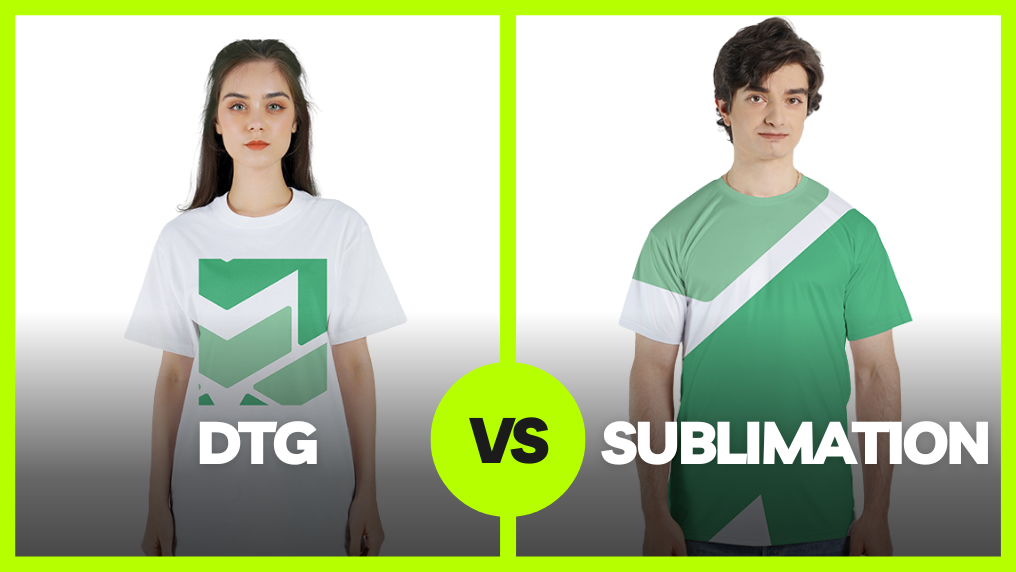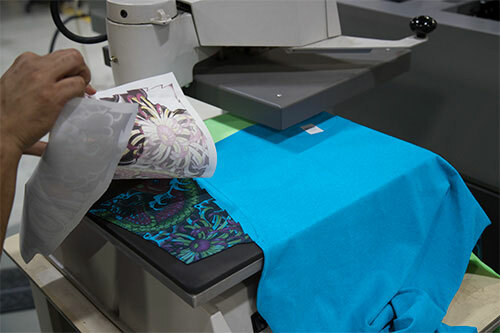Top Trends in Branded Clothing That You Need to Learn about
From Traditional to Digital: Comprehending the Evolution of Towel Printing
The change of fabric printing from conventional approaches like block printing and resist coloring to contemporary methods such as display and electronic printing notes a considerable change in the fabric sector. Traditional methods, steeped in artisanal craftsmanship and social value, have actually gradually given way to digital innovations that provide unmatched accuracy, performance, and modification. This change not just boosts production capabilities but also lines up with growing needs for lasting techniques. Just how do these advancements influence the significance of towel printing, and what might the future hold for this ever-evolving craft?
Typical Cloth Printing Approaches
In the beginning of textile production, standard cloth printing methods acted as the cornerstone of fabric design, supplying both capability and creative expression. Techniques such as block printing, resist dyeing, and stenciling were meticulously created and fine-tuned over centuries, each contributing one-of-a-kind visual high qualities and practical applications to the fabric sector. Block printing, one of the earliest approaches, entailed carving intricate styles into wood blocks, which were then dipped in color and pressed onto fabric. This labor-intensive procedure permitted for the rep of in-depth patterns, showcasing the craftsmen's ability and imagination.
Withstand dyeing, consisting of techniques like batik and tie-dye, used wax or various other substances to avoid color from passing through specific locations of the fabric. This method developed striking contrasts and elaborate styles, commonly imbued with social value. Stenciling, one more traditional method, entailed reducing patterns right into a material and applying color through the openings, supplying an easier yet effective method to generate recurring layouts.
These traditional techniques not just formed the textile market's early development but also laid the foundation for future advancements. Each strategy mirrored the social and local characteristics of its beginning, maintaining and sharing artisanal expertise via generations.
The Increase of Display Printing
The development of display printing in the early 20th century marked a considerable separation from standard approaches, providing unmatched flexibility and effectiveness. Screen printing allowed designers to generate intricate patterns and dynamic colors on fabrics, which were previously challenging to attain with block printing or hand-painting approaches.
Among the key advantages of screen printing is its capacity to replicate complicated designs on a large range with exceptional integrity. This scalability made it exceptionally preferred in the industrial fabric industry, where mass production without compromising quality is vital. Moreover, display printing fits a vast array of inks and dyes, broadening the palette of textures and coatings readily available to designers.
In addition, the procedure is extremely versatile, appropriate for different fabric types including cotton, silk, and synthetics. This adaptability, combined with its cost-efficiency for huge runs, strengthened display printing's role as a keystone of contemporary textile production. Hence, the surge of screen printing transformed the industry, pressing the limits of what was feasible in textile design.

The Development of Digital Printing
Structure on the remarkable improvements brought by display printing, the fabric sector experienced one more groundbreaking growth with the arrival of electronic printing. Arising in the late 20th century, digital printing revolutionized click here to find out more the way styles are transferred onto fabrics, providing unmatched versatility and effectiveness. Unlike typical methods, which usually called for comprehensive setup and considerable manual treatment, digital printing employs computer-aided layout (CAD) innovation to create detailed patterns directly onto the material with high precision.
This development has enabled textile suppliers to fulfill the expanding need for modification and on-demand production. By removing the demand for displays and plates, digital printing minimizes preparations and minimizes material waste, making it a much more sustainable option. The capacity to publish intricate pictures and a vast array of shades in a single pass has actually opened new innovative methods for designers, promoting a rise in creative expression within the industry.
Additionally, electronic printing supports smaller batch production runs, which is specifically advantageous for particular niche markets and startup fashion brand names. This technological leap has not just enhanced operational effectiveness but likewise democratized accessibility to premium textile printing, establishing the phase for future developments in fabric design and manufacturing.
Contrasting Methods: Traditional Vs. Digital
While both conventional and digital printing methods have their very own unique advantages, they differ considerably in terms of procedure, effectiveness, and environmental impact. Conventional towel printing, encompassing strategies like block printing and screen printing, involves hand-operated labor and complex workmanship.
On the other hand, electronic printing employs sophisticated innovation to move designs directly onto material using inkjet printers. This technique offers unequaled precision and a large range of shade alternatives, allowing elaborate and highly detailed designs. Digital printing is dramatically quicker, enabling for quick turn-arounds and just-in-time production, which reduces the demand for big inventory storage space. Furthermore, it sustains modification and small batch production, dealing with contemporary customer demands for individualized items.
From an environmental viewpoint, digital printing is usually much more sustainable. It utilizes much less water and produces marginal waste compared to typical methods, which usually include extensive cleaning and dyeing procedures. Digital printing is increasingly favored in a period where ecological considerations are extremely important.
Future Trends in Fabric Printing
As the textile industry remains to evolve, future patterns in towel printing frequently direct in the direction of better integration of innovation and sustainability. One substantial trend is the boosted application of electronic printing technologies. These improvements permit higher precision, faster production times, and the capability to produce intricate layouts that were as soon as tough with typical approaches. Digital textile printing is expected to dominate the marketplace, driven by its effectiveness and adaptability to customer demands for customized and limited-edition items.

Furthermore, the incorporation of smart fabrics, which integrate digital elements into fabrics, is readied to revolutionize the marketplace. These fabrics can provide extra performances such as temperature level guideline, health and wellness tracking, and interactive features. As modern technology proceeds to development, the intersection of electronic printing and clever textiles will certainly open up brand-new opportunities for useful and creative applications in fabric printing.
Verdict
The development of fabric printing from traditional techniques to electronic developments notes a significant change in the fabric sector. While conventional strategies highlight artisanal craftsmanship and social heritage, digital printing supplies unmatched precision, efficiency, and modification. This change not only improves manufacturing capacities but also sustains sustainability campaigns. Future trends are most likely to proceed integrating sophisticated technologies, additionally redefining fabric layout and production procedures to meet ecological considerations and modern demands (Branded clothing).
The makeover of towel printing from typical techniques like block printing and stand up to dyeing to contemporary techniques such as screen and electronic printing marks a significant change in the fabric sector. Screen printing enabled developers to produce intricate patterns and lively colors on textiles, which were formerly testing to accomplish with block printing or hand-painting techniques.
Structure on the exceptional innovations brought by display printing, the fabric sector experienced an additional groundbreaking advancement with the advent of electronic printing. screen printing. Typical towel printing, encompassing techniques like block printing and display printing, involves manual labor and elaborate craftsmanship. As modern technology continues to breakthrough, the crossway of electronic printing and smart textiles will open up brand-new avenues for innovative and try this out useful applications in cloth printing